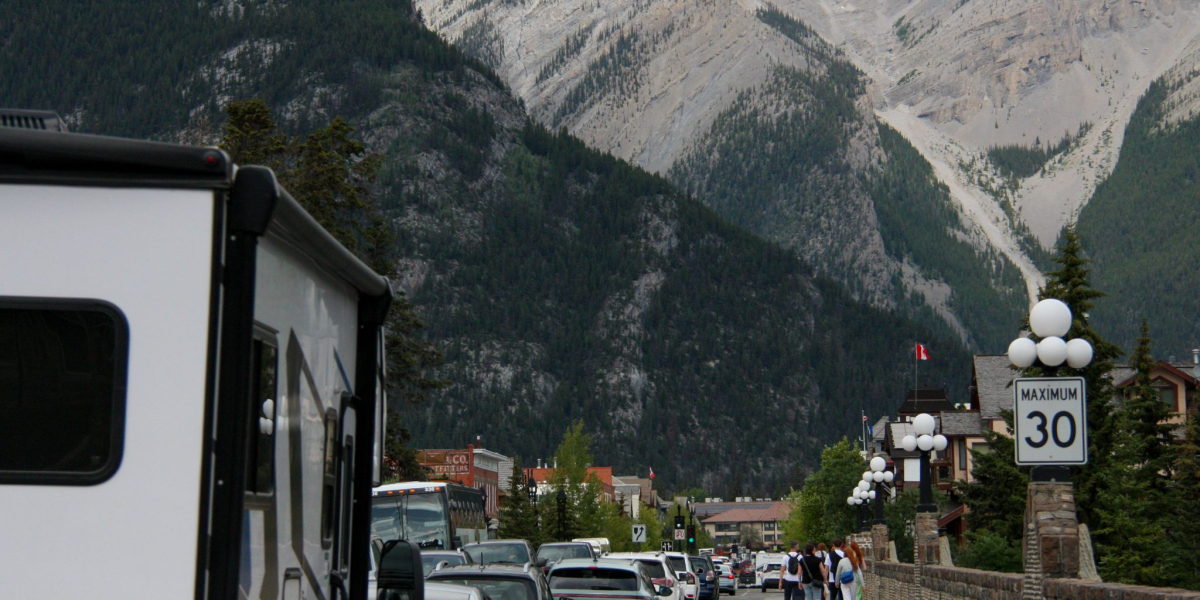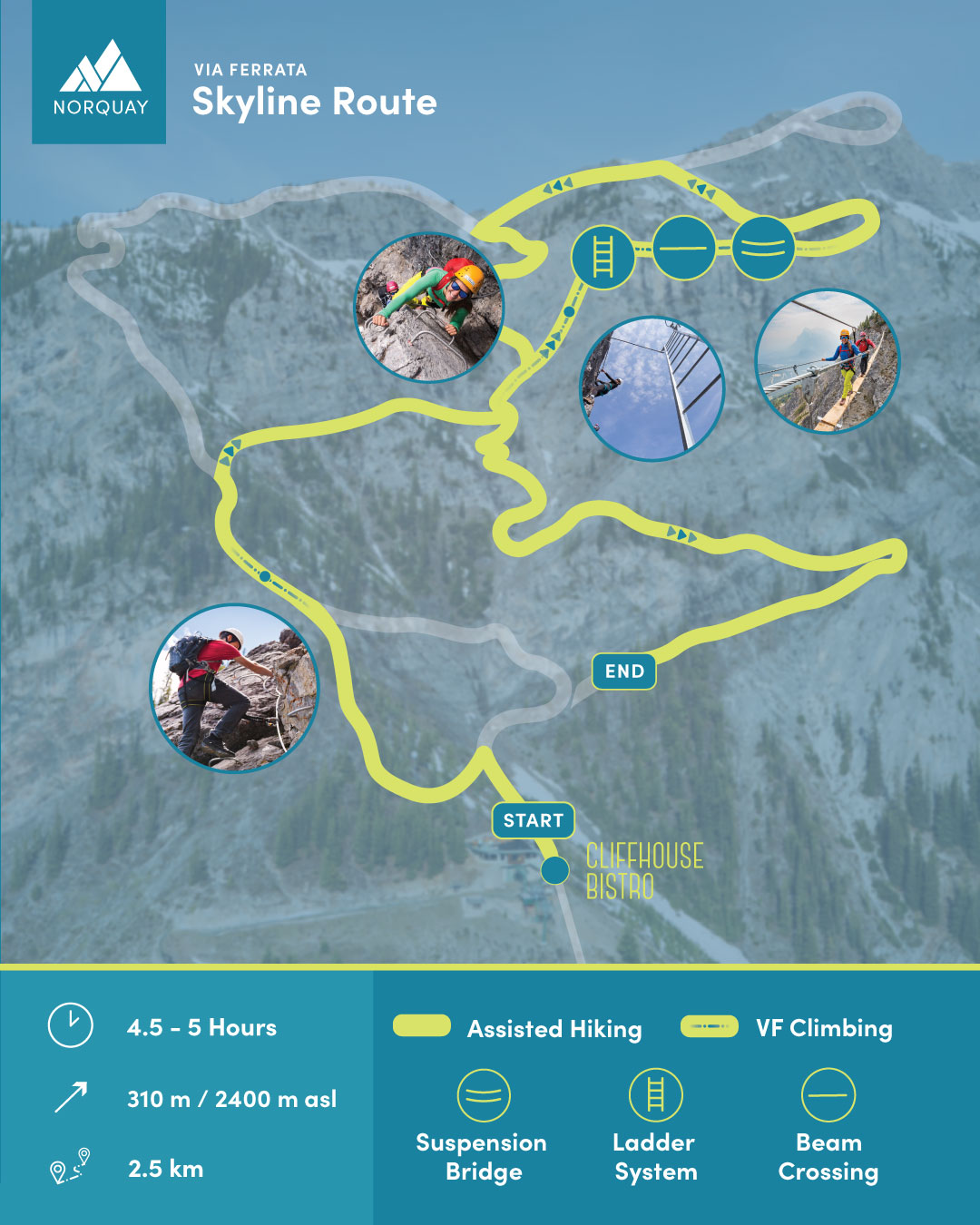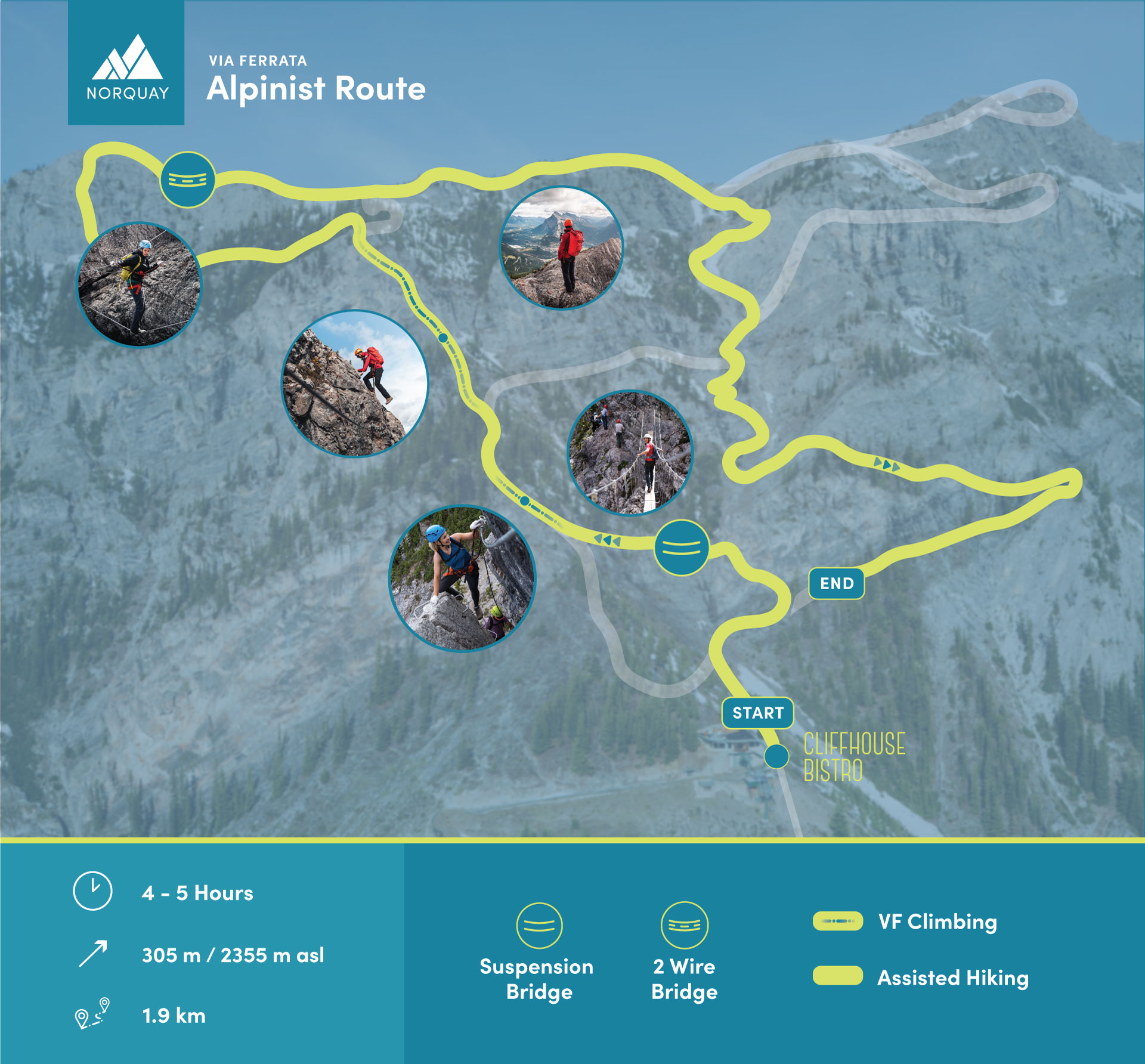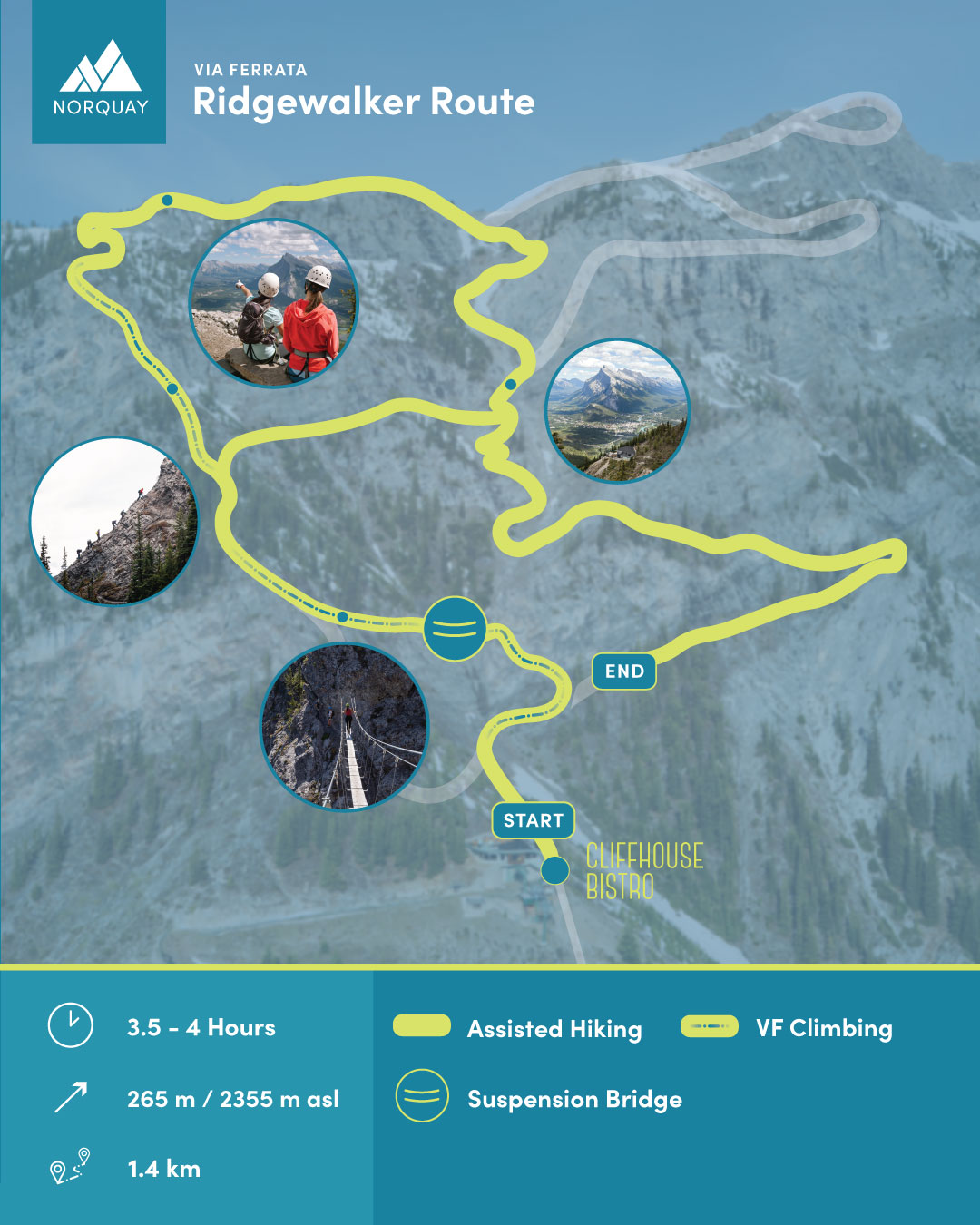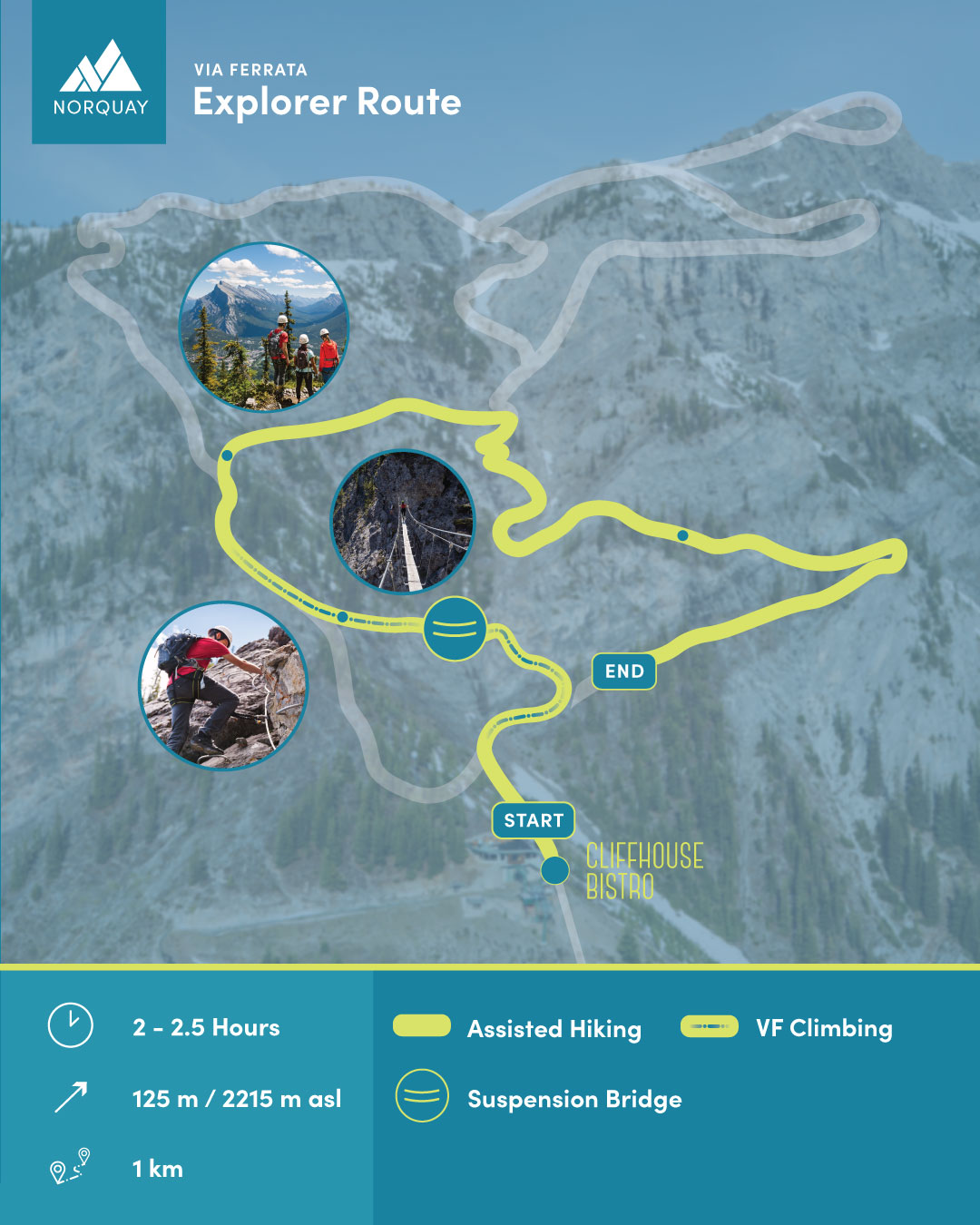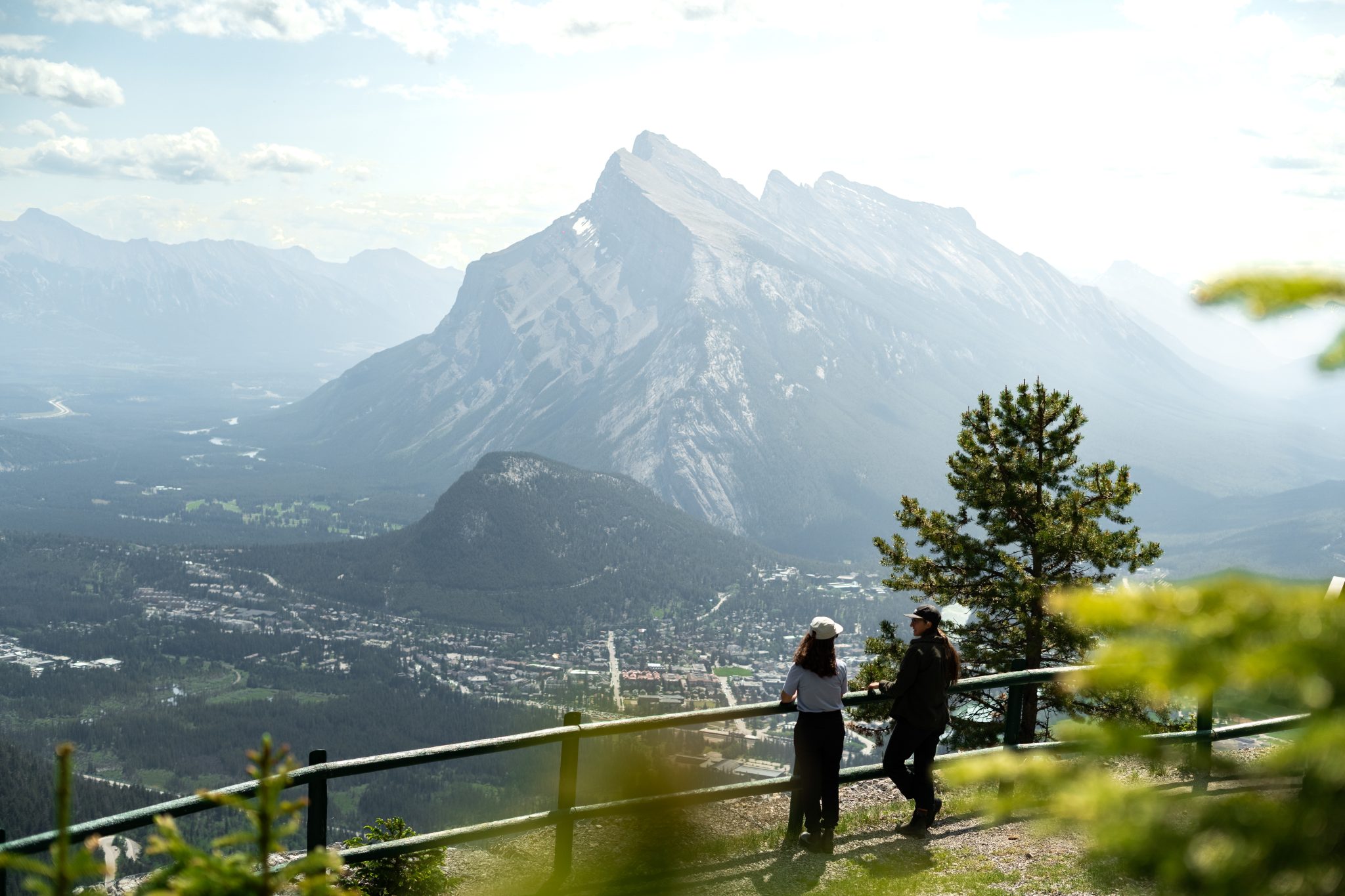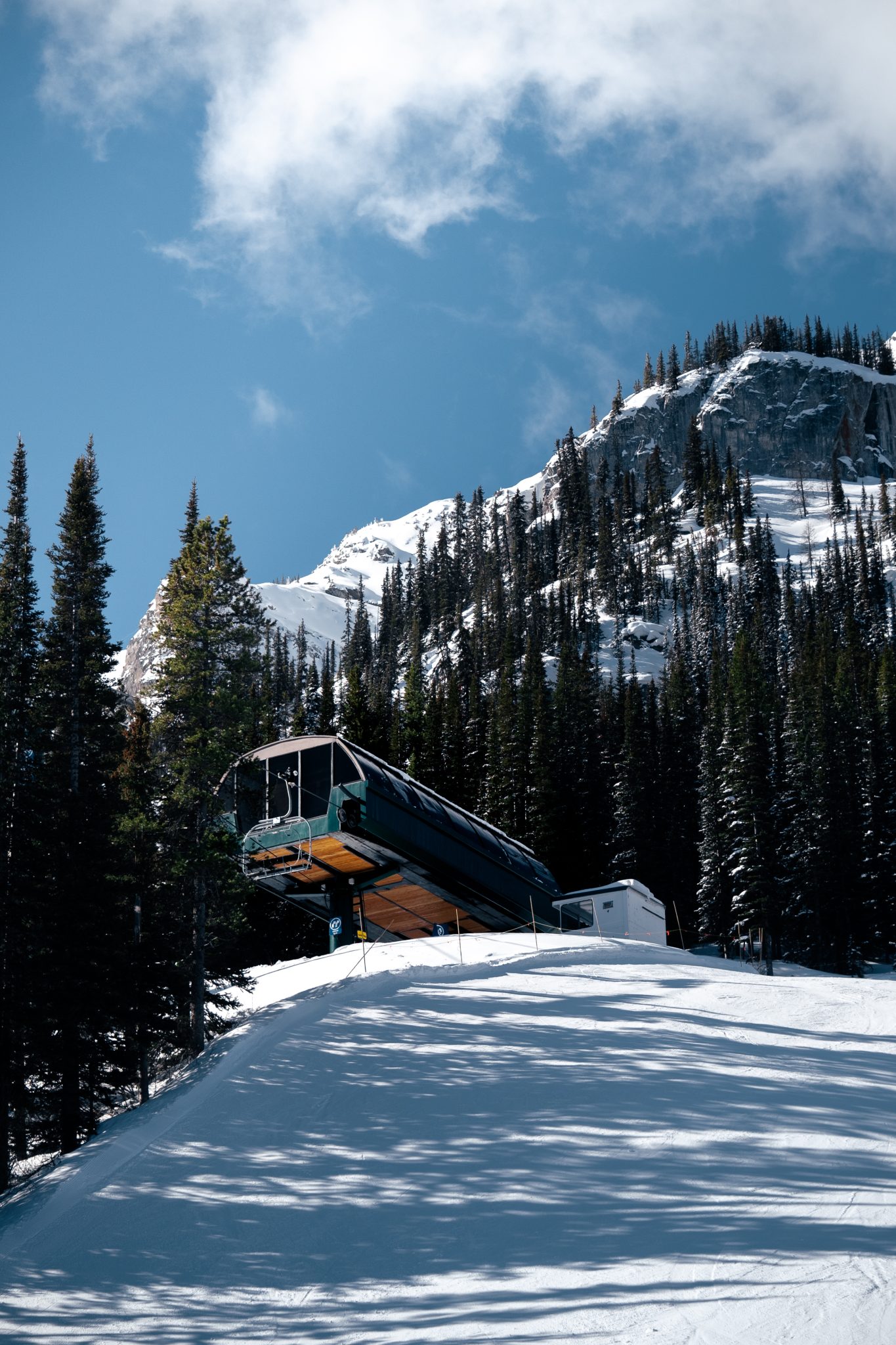You’ve likely read the news headlines: vehicle congestion in Canada’s first national park has reached a tipping point.
On Canada Day weekend, Banff saw 33,000 vehicles enter the townsite in a single day. It was the second-highest daily total on record, surpassed only by Canada Day 2017. Traffic congestion occurs when more than 24,000 vehicles enter town in a day, and that threshold was exceeded every day in June and July 2025, as well as in July and August 2024.
“The main issue is that the town is only 4 square-kilometres in area and we have the same road network as when we were incorporated in 1990,” said Banff Mayor Corrie DiManno. “We will not expand into the national park around us, but that means there are too many vehicles for our road capacity and parking, especially downtown.”
“Another problem is we have one vehicle bridge and one road up Sulphur Mountain to attractions like the gondola and the hot springs, just outside of the town boundary,” adds DiManno. “On nice summer days, these parking lots are full around 10 a.m., which guarantees we will have traffic jams on the south side, as vehicles are turned away and head back downtown.”
Vehicle traffic in 2025 is up 6% compared to the same period in 2024, as of the August long weekend. At this pace, Banff is on track to surpass last year’s record of nearly 6.7 million vehicles entering the townsite.
To deal with the increases in vehicle traffic, the Town introduced pay parking downtown in 2021 to reduce congestion in the core by increasing stall turnover and encouraging visitors to use free parking at the entrance to town, thanks to Norquay’s free 500-stall parking lot and additional 160-stall gravel lot, both located at the Banff Train Station.
The Town of Banff is advocating to the federal and provincial governments to invest in mass transit linking Calgary and Banff. It strongly supports Liricon/Norquay’s initiative to restore passenger rail service to the community. Along with measures that discourage driving, such as free public transit for residents and expanded Roam Transit services, reducing vehicle traffic is central to the Town’s long-term strategy for sustainable visitation.
Norquay’s intercept parking lot at the Train Station has helped, but it reaches capacity every summer day as visitor numbers continue to grow. As part of its commitment to being part of the solution and as outlined in the Train Station Area Redevelopment Plan, Norquay’s Vision includes expanding parking on the north side of the railway tracks on land currently leased from Canadian Pacific, to better manage demand.
The status quo isn’t working; Banff needs bold solutions.
As part of Norquay’s 100 Vision, the proposed Cliffhouse Gondola is designed to be both a visitor experience and an opportunity to ease traffic congestion in Banff. It would offer a new option for visitors to reach the high alpine—one that’s accessible to everyone—while cutting down on vehicle traffic through town and, most importantly, over the already overwhelmed Bow River Bridge.
“Adding intercept parking has already made a huge difference but imagine adding passenger rail service from Calgary directly to the Banff Train Station, removing the need for thousands of rental cars,” said Andre Quenneville, General Manager at Mt. Norquay. “Reducing reliance on private vehicles in Banff will help ease congestion and make it a more enjoyable place to be.”
Thanks to revenue from paid parking, the Town of Banff used $1.125 million from its Visitor Pay Parking reserve toward the $1.875 million Mountain Avenue project. While this funding model allowed the Town to improve access to Sulphur Mountain attractions without relying on local tax dollars, traffic remains a significant challenge that has to be addressed quickly.
We can’t keep doing the same thing and expecting different results. Real change requires vision, innovation, and the willingness to act now. That’s the driving force behind the Norquay 100 Vision, a bold plan to create a more sustainable, accessible, and enjoyable future for everyone experiencing Banff.
